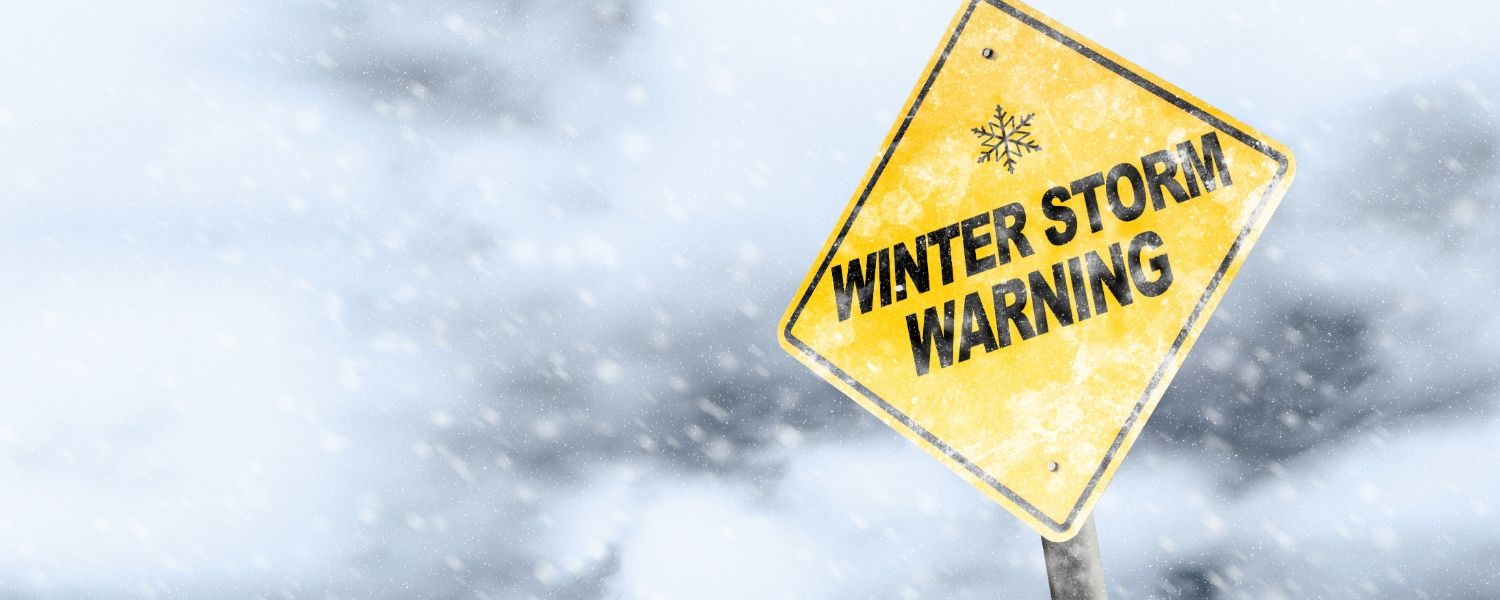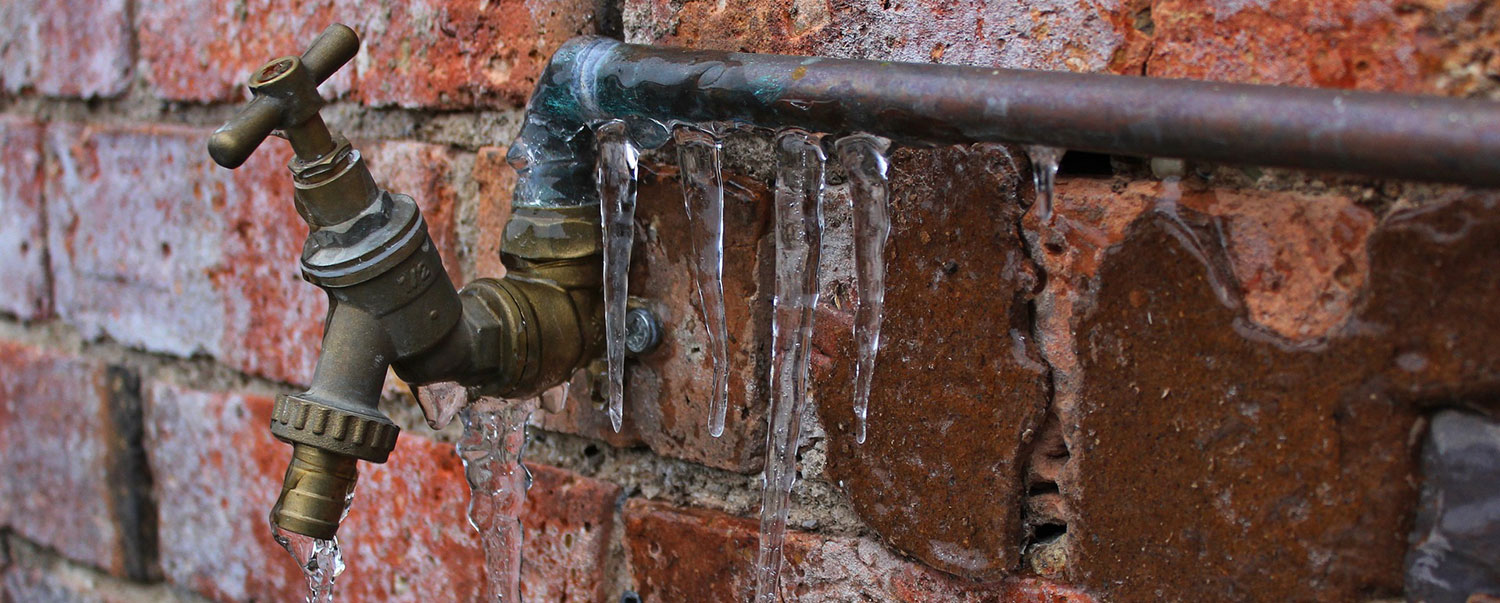The Warning Signs of Frozen Pipes
Enjoy reading the latest DIY articles and saving money?
Receive our latest helpful hints, tricks and savings, directly to your inbox.
Posted December 27, 2019
The winter months can make life more difficult, as freezing temperatures and heavy snowfall make going outside difficult. The weather can even make it hard to start your car. However, your home keeps you safe from the elements and gives you a warm and cozy place to come back to each night. Or does it? Winter weather can cause all sorts of complications inside your home if you are not properly prepared for it. One of the most dangerous and destructive things that can happen to your home is frozen pipes. Frozen pipe repair can quickly rack up thousands of dollars in damages, and can leave you ankle-deep in water in the dead of winter.
Fortunately, there are a few warning signs that you can look out for, as well as a few preventative measures that you can take, to protect your home and property from damage during the holiday season. Read on to see a few of the top tips.
Why Are Frozen Pipes Dangerous?
Frozen pipes can be extremely destructive because water expands when it freezes. This means that your plumbing, already under a lot of pressure, will be trying to contain a solid larger than itself.
In short, this causes your pipe to burst. Once this happens, water is able to flow freely into your home, where it can cause substantial amounts of structural damage. Since water spreads so quickly, a burst pipe can lead to damage to all levels of your home.
Further, cleaning up water damage is an involved process and can take quite a long time. This is compounded by the fact that water damage restoration and remediation is very important. Failing to properly clean a water damaged area can lead to mold growth in your home.
The presence of mold is a serious health concern. Breathing in mold spores for a prolonged period can lead to several health conditions, and can aggravate existing health problems. Mold can also spread behind your home’s walls and into the ductwork, where it can be harder to detect and remove.

Warning Signs of Frozen Pipes
It’s important to catch frozen pipes early. Most of the time, you’ll be able to boost the temperature on your thermostat or talk to a professional plumber before any damage occurs. Of course, you need to know what the warning signs associated with frozen pipes are so that you can take action.
No Water
The clearest sign that you have frozen pipes is if there is a complete lack of water coming out of your faucets and fixtures. This means that the water in your supply lines has frozen solid. In some cases, due to a partial freeze, you may still see a slight trickle of water.
Smells Coming from the Drain
Another sign that the water in your pipes has frozen is if you notice a strong smell coming from your drains. This can affect several drains at once, though you may see only a single drain affected.
This will only happen if the water in your drain pipes freezes, as the ice will then block any odors from food, grease, or waste that you drain. This will then stink up the room where that frozen pipe is connected to.
This is a common plumbing problem that can also result from regular blockages. However, if you notice foul smells during the winter, frozen pipes are more likely to be the culprit.
Visible Frost
Another fairly common sign of a frozen pipe that is a little harder to spot is the presence of frost on the pipes themselves. You’ll only be able to tell if this is the case if you can get access to your pipes.
If you have exposed pipes, being able to pinpoint exactly which sections have frozen is important information. It can help you take steps to melt the ice in the pipes, and proactively make changes to your insulation or plumbing to prevent future freezing.
Water Damage
Finally, the last and most serious sign that your home has suffered from frozen pipes is if you can spot signs of water damage in your home. A burst pipe can allow a large amount of water to pour into your home, so any signs of flooding or structural damage can be attributed to frozen plumbing.
Of course, sometimes frozen pipes can experience only minor structural damage. If this is the case, the leak will likely be much smaller. You may not notice a small leak straight away, especially if it happens behind your walls or out of the main areas of your home.
Some warning signs of hidden water damage in your home include:
- Peeling or bubbling paint and wallpaper
- Strong, musty odors associated with mold
- Dirt-like stains of green, black, or orange (which also points to mold growth)
- The sound of running water
- Structural damage (sagging, collapsing, texturing) of walls and ceilings
Noticing any of the above issues, or noticing several of them, are all red flags that you should get in touch with a professional plumber as soon as you can.

What You Should Do Immediately About Frozen Pipes
If you’re able to determine where your pipes have frozen but not burst, there are things you should do immediately to prevent damage from occurring. You should always call an emergency plumber before you do anything: they’ll be able to do the work for you and perform a quality and professional frozen pipe repair.
The next thing that you should do is increase the temperature around the frozen pipe. You can use a hair dryer or space heater to raise the ambient temperature in the space around the pipe.
You should avoid applying heat directly at the pipe for too long, however. Alternating between freezing and hot temperatures can reduce the integrity of your pipe, and make a crack more likely.
Instead, gradually bring the temperature up bit by bit. You can also raise the temperature on your home’s thermostat a few degrees to help as well. If the frozen pipe in question is underneath your sink or otherwise removed from the main space of the room, make sure to open the cabinet doors to improve air and heat circulation.
In the short term, if a plumber can’t get to you fast enough and some water is still making its way through, leave the faucet attached to the frozen pipe on a dribble. Moving water will not freeze as easily, though it will raise your water bills. This can buy you the time necessary for a professional to get to you.
What You Should Do to Prevent Future Frozen Pipes
If you suffer from frozen pipes each year, you should take steps to improve the insulation and heating of your home and plumbing. There’s no reason to suffer headaches about ice in your plumbing each year. Make a list of local plumbers near me so that you’ll know who to call when you have issues. Taking these steps proactively can also save you money in the long run, since you’ll have to pay for plumbing services and frozen pipe repairs less often.
Plumbing Insulation and Heating Cables
For specific sections of pipe that run against an outside wall or that have frozen in the past, you can install insulation and heating cables directly on them. Plumbing insulation fits right over the pipe and helps trap heat inside your pipes throughout the winter. It is simple to install, will last years, and is a set-and-forget solution.
In contrast, you can also choose to get heating cables to lay along your pipes. These have to be actively plugged in but will warm your pipes directly. This is enough to prevent freezing and melt any frost or ice that does form no matter the temperature outside.
Of course, heating cables will increase your utility bills. They also require more tending to work, since you’ll have to plug and unplug them as the weather outside changes.
Home Insulation Inspection
In a similar vein to the above point, you also want to think about checking your home’s insulation. Frozen pipes can sometimes be caused by old or inadequate insulation in your home, which allows drafts and cold spots to develop.
Talk to a contractor about setting up an infrared camera inspection. These inspections can track just where your home is losing the most heat, and where the insulation likely needs to be replaced. This helps speed up your installation time – and can also help you save money by only replacing the insulation that needs to be removed.
Duct Cleaning and Furnace Maintenance
Beyond checking the insulation of your home, you should think about improving the overall effectiveness and efficiency of your furnace. The place to start is in your ductwork. Clogged ductwork that is full of dust and debris will inhibit airflow throughout your home.
In the winter, this means that some areas of your house are not properly heated, which can make frozen pipes more likely. Having a professional come in and clean out the ducts can help reduce that risk.
However, the issue doesn’t end with your ductwork. Furnaces can lose efficiency as they age as internal components, like the fan, blower, or heating element wear down. If your furnace’s parts aren’t operating properly, it has to work harder and longer to provide the same amount of heat.
Not only does this mean that your pipes are at a greater risk of freezing, but it also means that your energy bills each month will increase as well. You’ll be able to track an increase month to month, but you’ll also likely notice drafts and cold areas of your home. Maintain a regular maintenance schedule with an HVAC contractor to ensure that your furnace is heating your home and your plumbing properly.
Will My Insurance Cover the Damage from a Burst Pipe?
Insurance is a complicated topic, which makes this question hard to answer. In short, it depends.
Most insurance companies will offer plans and policies that cover the damage that a burst pipe causes to your home. However, those policies will come in at a higher price point, especially depending on the climate you live in.
If you are on a more affordable plan, the odds are that your plan will not cover the damages or repairs associated with frozen pipes. Other plans come with several terms and conditions that may void your coverage – for instance, if your furnace was set below a certain level.
The best way to figure out if a burst pipe is covered by your insurance plan is to talk to your insurance agent. If your current plan does not cover the damages, you should inquire about how much such a policy would cost, and then compare that cost against making improvements to prevent a burst pipe in the first place. Often, it may be affordable to protect your home through insurance or through improvements, but not both.
Pay Attention to the Weather and Your Home
Beyond implementing some of the methods mentioned above, being vigilant is the best way to avoid frozen pipes. Keep an eye on the weather, and be wary of any issues with your home’s heating or water flow. By catching issues early, you can save yourself the frustration and substantial repair bills associated with a burst pipe later on.
In the event that you have frozen pipes or any other plumbing problem, don’t hesitate to contact us to request an appointment! Our team of highly experienced plumbers will be able to address any questions that you might have and help you solve your issue quickly.
 Daily Promotion
Daily Promotion
$500 Off Tankless Water Heater
Upgrade your comfort and give back this season.
Get Promotion